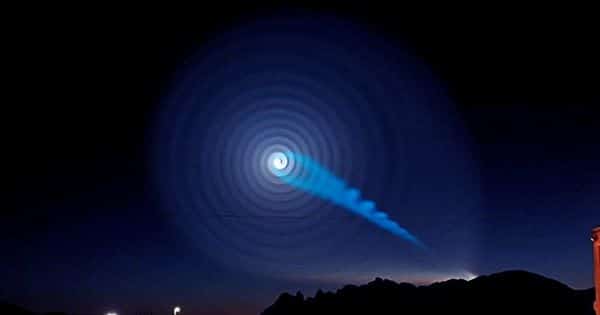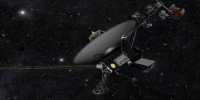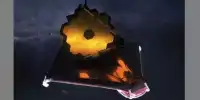Recent reports from U.S. officials regarding the unidentified flying object (UFO) – or more precisely, its lack – prove that many mysteries remain in the night sky despite the progress of mankind in astronomy. It’s really rather satisfying when the curious phenomenon of << Enter the Bizarre Sky Exhibition> was cracked by science. A similar unspoken phenomenon was observed in the skies of New Caledonia and Vanuatu in the southwestern Pacific Ocean around 8 pm on June 18. Several eyewitnesses here have seen a beautiful sight, but in front of their eyes the sky seems to have sparkled in a dazzling spiral.
In an updated Facebook post about the report, the Association Caldonian d’Astronomy (ACA) said:
“Several witnesses in Yat, Theo, La Tontota and Vanuatu witnessed this strange event. We have no explanation, but we are far from being experts on this type of phenomenon. Based on our preliminary research, the only similar but more dramatic event is the 2009 Norwegian Spiral
The 2009 Norwegian spiral was also observed at the northern tip of the country for about a minute. While such a scene could easily send many into the tailspin of existence, the great show has been seen as the result of a Russian missile launch that went wrong. A report by New Scientist states that the Russian government has confirmed as the source of the spiral that the Balava missile is thought to have crashed due to a reference to the damaged science.
This causes the missile to revolve with the plumb and catch fire which creates a lot of spiral display. So, does our Pacific Rotation have a similar down-to-earth explanation? According to the ACA, yes. “Jonathan McDowell, the American astronomer who listed all the motions and orbital launches on the planet, confirmed that this was the second phase of a Chinese Long March 2C rocket that landed at UTC on June 18 at 06:25 from the launch center. Wrote in an updated Facebook post, Jaichang with 4 satellites.
“After completing the mission, the phase would expel its fuel (UDMH and nitrogen peroxide) to passivate, meaning that it [prevents it from exploding] due to the remaining pressure,” explained Amouri Bailey, who contacted her. Says. That’s what you saw in the tank.”















